
My Top 8 Conifers for the Southeast

Conifers have a bad reputation for being difficult to grow in the South. While we may be a bit more limited than our northern neighbors in what cone-bearing plants we can populate our gardens with, we should not be deterred! I come to you today with a list of conifers worthy of your attention, and perhaps a slice of prime real estate in your yard.
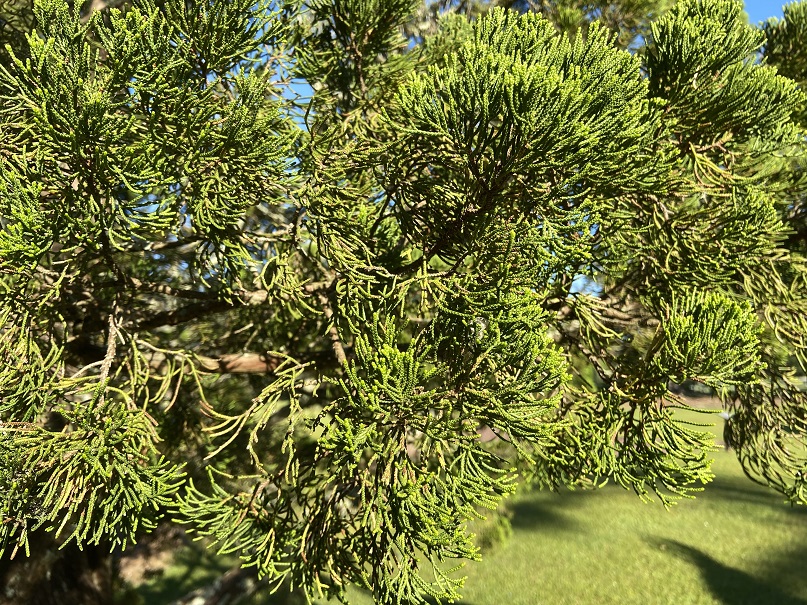
Before we jump right in, I want to give you a quick primer on our list and how the plants have been arranged. First, I will be focusing on specific cultivars, or cultivated varieties, unless otherwise indicated. These are ones we have grown here at Brookgreen and have found to perform well. Don’t get too hung up on the common name, since the cultivar name is what marks the plant as being unique. Second, since most of us probably aren’t sitting back on a few acres of land, the list will start with smaller, more suburban-yard friendly conifers, and move its way up to larger ones. Lastly, if you want to check these out for yourself, unless they are noted otherwise, you can find these conifers in or near our dwarf conifer collection in the Arboretum.
1. Deodar Cedar (Cedrus deodara 'Feelin' Blue’)
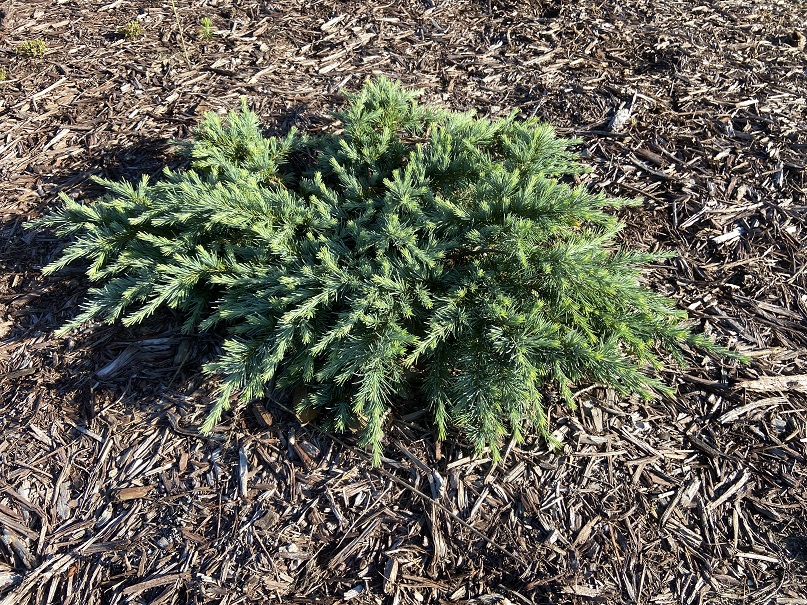
When I think of cedars, I think of tall, upright trees. Believe it or not, Cedrus deodara 'Feelin' Blue’ is the polar opposite! This low, spreading conifer creates a mat of glaucous foliage over the ground.
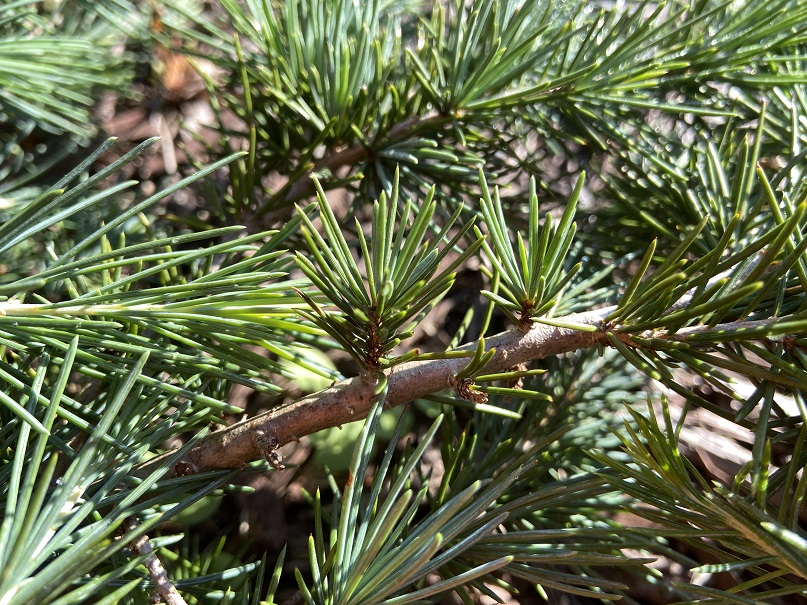
Like other cedars, the needles, or foliage, grow off of spurs, or raised portions of the stem. The spurs are also a great way to help identify a cedar!
2. Shore Juniper (Juniperus conferta 'All Gold’)
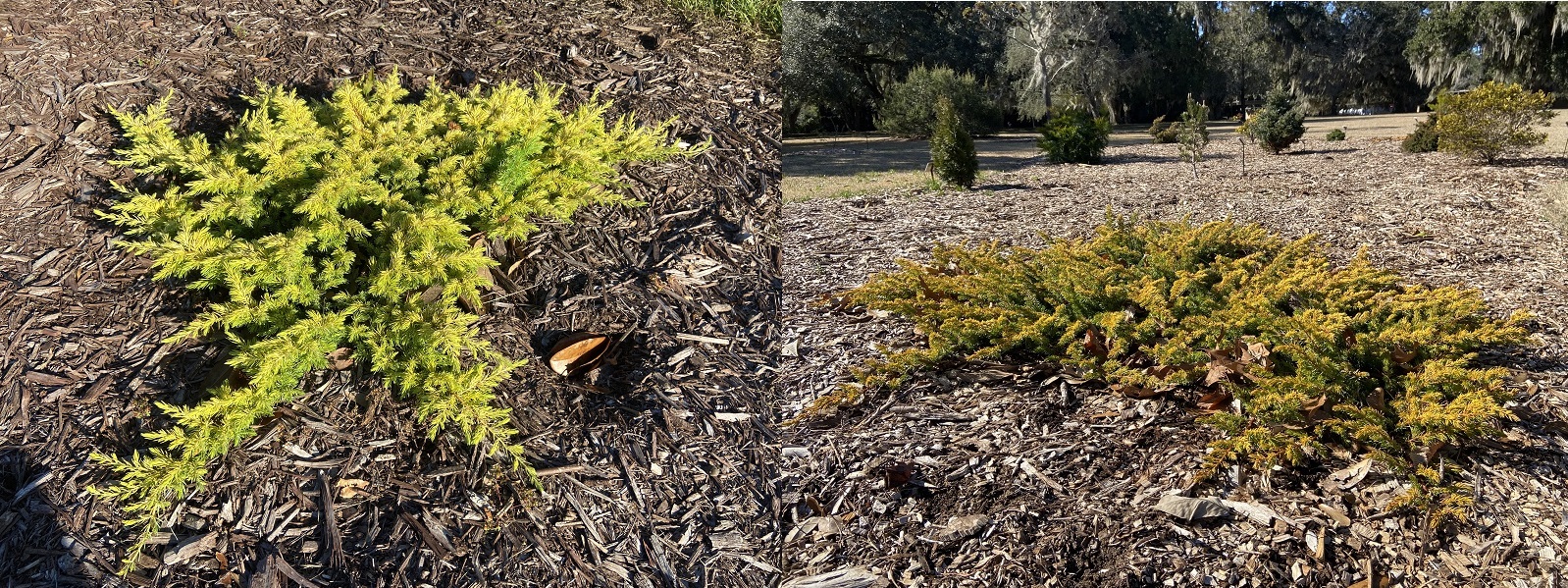
Junipers are a special kind of conifer that come in all shapes and sizes. While Juniperus conferta 'All Gold' may be the first juniper on our list, it won’t be the last! Just like ‘Feelin’ Blue’, ‘All Gold’ is another ground cover type conifer. This juniper, as you can see from the side by side pictures above, does something funny in the winter: it bronzes. This simply means that when it gets cold outside, the foliage begins to change to a darker color, sometimes resembling bronze. This is a natural occurrence in the plant and no reason for alarm.
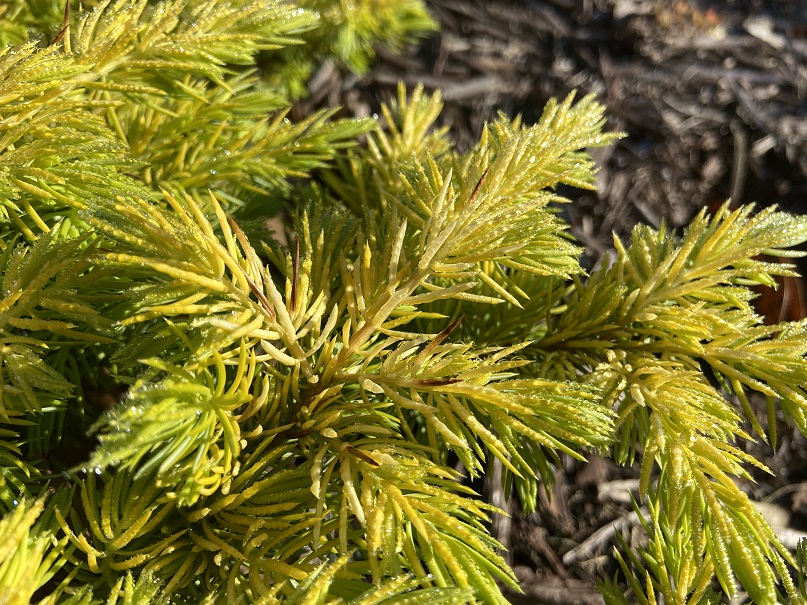
When not bronzed, however, the foliage is a vibrant yellow. As an evergreen plant, I love how this brightens the landscape throughout the year. Bronzed or not, this juniper is easy to draw your attention.
3. Japanese Cedar (Cryptomeria japonica 'Tansu' )
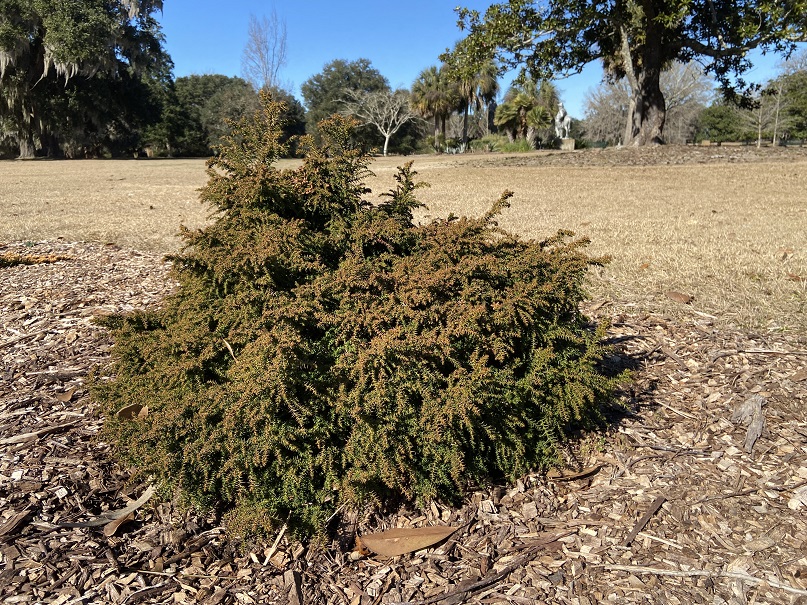
This dwarf form of Japanese cedar is a welcome addition to any planting. Its compact size of only a few feet is a great anchor in the landscape and is another perpetual presence, regardless of the season.
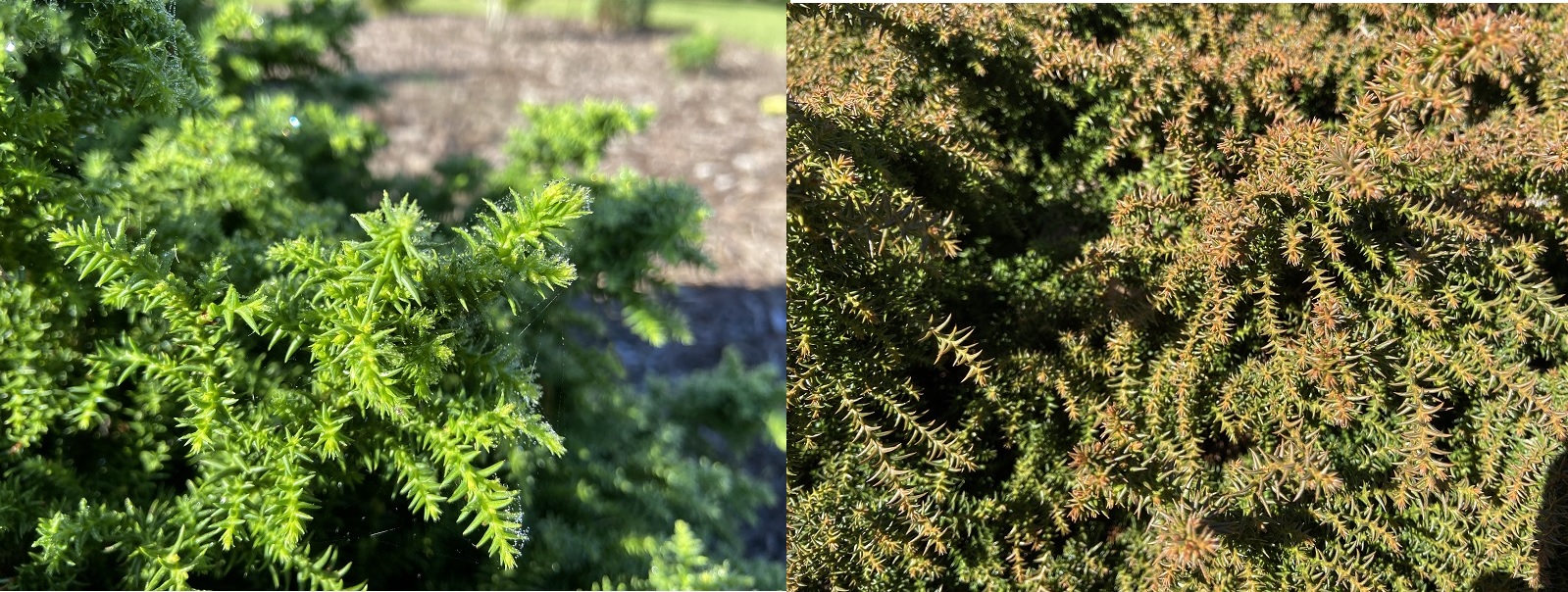
Like Juniperus conferta 'All Gold’, ‘Tansu’ is another conifer that bronzes in the winter. In the warmer months, the foliage is bright green, while this time of year it turns into more of an orange color.
4. Sawara Cypress (Chamaecyparis pisifera 'Devon Cream’)
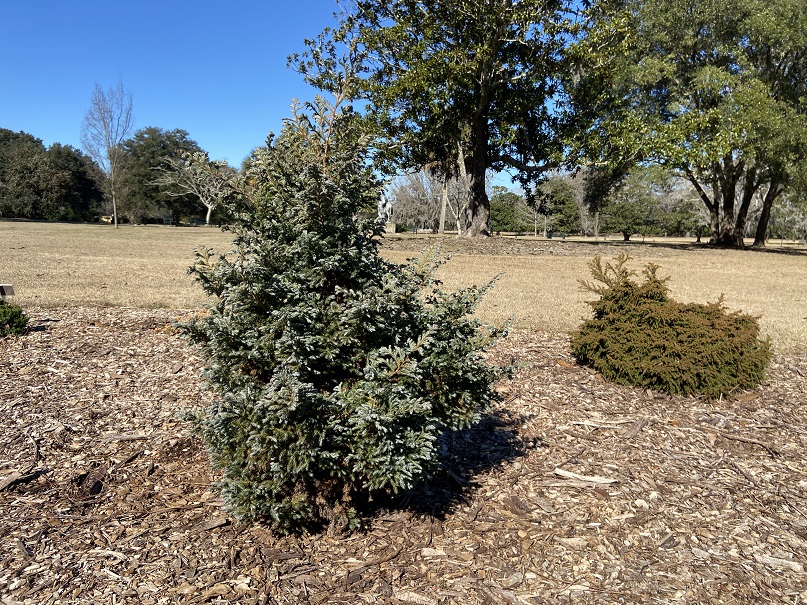
Although planted among our dwarf conifers, Chamaecyparis pisifera 'Devon Cream' is more compact than other sawara cypress, but typically grows to about ten feet tall at maturity. I particularly enjoy this conifer for its soft texture and light blue and white foliage.
5. Chinese Juniper (Juniperus chinensis ‘Kaizuka’)
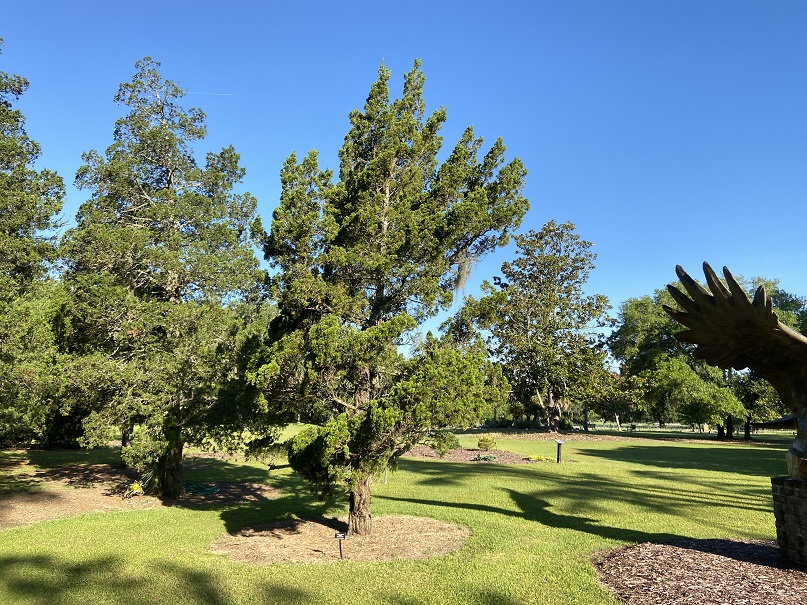
This isn’t our first look at junipers! Earlier on we looked at another juniper that grew as a low-growing ground cover. Our next juniper, however, is an upright plant that grows to about fifteen to twenty feet tall. Also known as Hollywood juniper, this wind-swept looking beauty definitely adds some drama to the landscape, but the good kind of drama. You can find Juniperus chinensis ‘Kaizuka’ a few steps away from our dwarf conifer collection in the Arboretum. It is right next to Sandy Scott’s Presidential Eagle.
6. Hiba Arborvitae (Thujopsis dolabrata)
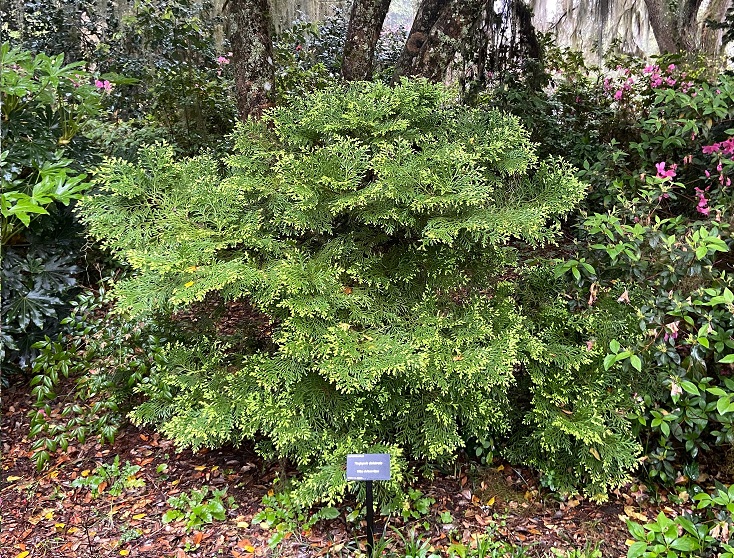
Hiba arborvitae is, simply put, a great plant. I could go on and on singing its praises and rambling about different cultivars, but since I’ve already done that here, I’ll spare you the déjà vu moment. Since hiba arborvitae are slow growing, its easy to think they stay relatively small. Don’t be deceived - they can reach about fifteen feet in height when they mature!
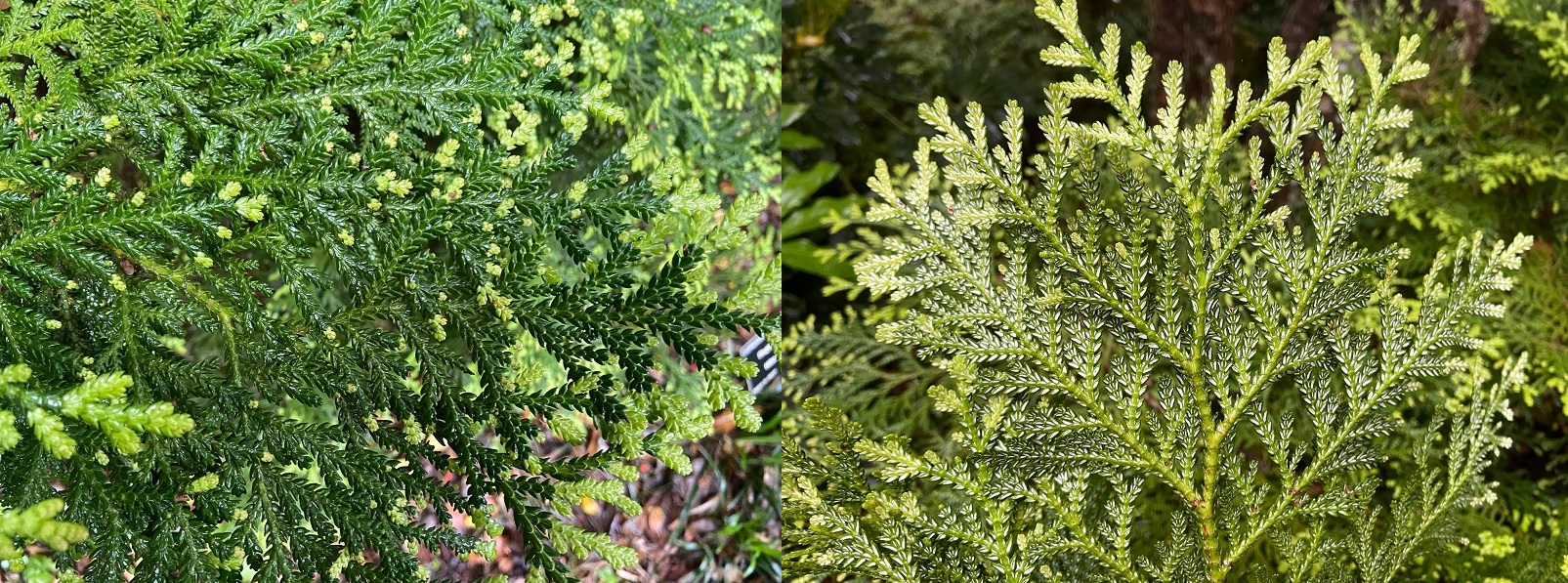
The foliage is definitely a great feature of Thujopsis dolabrata. Pictured above, you can see a side by side photo of the front and the back of the foliage. It’s hard not to find the butterfly-like markings on the backsides of the leaves an attractive surprise! You can find these throughout the gardens, including in the shade of the Rosen Carolina Terrace, Dorothy P. Peace Garden Room for Children, and Live Oak Allée.
7. Japanese Cedar (Cryptomeria japonica)
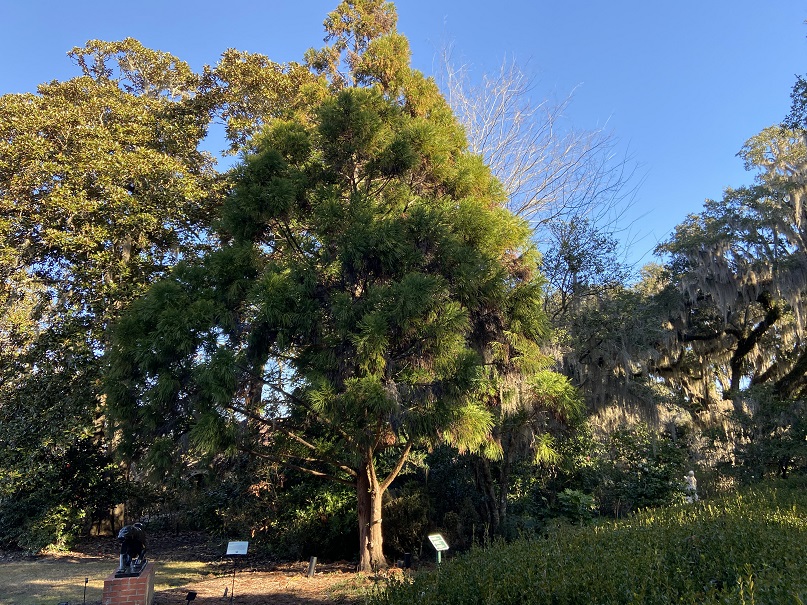
As we continue to move our way through this list, the plants are getting bigger and bigger! Even though we looked at the relatively small Cryptomeria japonica ‘Tansu’, the straight species is anything but! Planting a Japanese cedar is making a commitment of space, as these conifers grow to about fifty feet tall. You can spot them in our gardens near Dionysus by Edward Francis McCartan.
8. Spruce Pine (Pinus glabra)
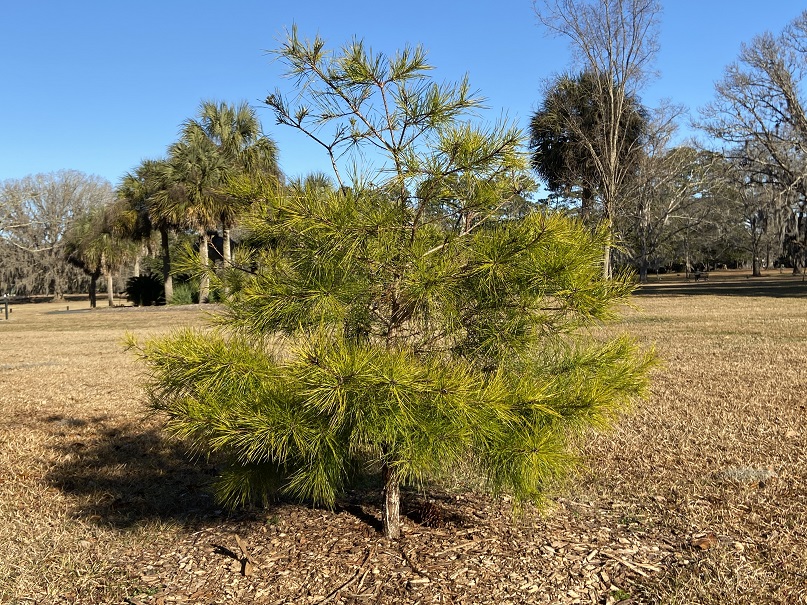
Rounding out the list are spruce pines, a fast growing pine species that can reach a very tall forty to sixty feet in height! Although our specimen, pictured above, is nowhere near its mature height, we enjoy watching it put on new growth each year as it works to attain it.
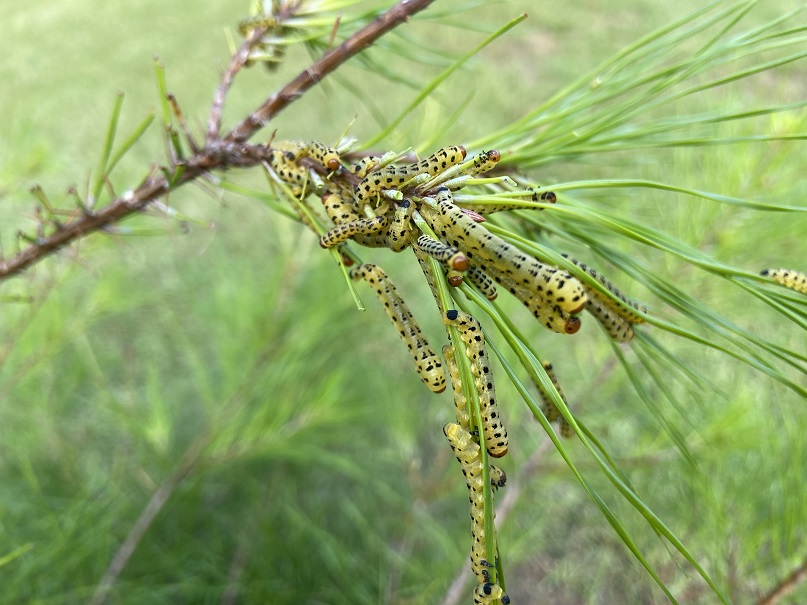
The only thing that enjoys our spruce pine more than us, is sawflies! These pesky insects are hungry critters who will make your pine into a meal. Luckily, with the help of staff, we were able to remove these by hand and help our ailing Pinus glabra find some reprieve. You can find our spruce pine a short distance from the dwarf conifer collection.
Conifers are an excellent addition to any garden. With so many shapes, sizes, and colors to choose from it’s hard to not want to incorporate them throughout the landscape! Whether you want to try your hand at some at your own home, or just want to experience them at Brookgreen, they are a grouping of plants worthy of attention.
See you in the gardens!
Hours
Hours: Monday & Tuesday 9:30 AM - 5:00 PM
Wednesday - Sunday 4:00 PM - 9:00 PM
For daytime admission, gates close at 4:30 PM. For their safety and the safety of our animal collection, pets are not allowed, nor can they be left in vehicles inside Brookgreen. Service animals that have received special training to assist disabled persons are welcome.
Tickets
Daily General Admission Tickets for 7 consecutive days
Children 3 and under: Free
Children 4-12: $14
Adults 13-64: $25
Seniors 65 & Over: $23
Location
1931 Brookgreen Drive
Murrells Inlet, SC 29576
Off US Highway 17 Bypass, between Murrells Inlet and Pawleys Island on South Carolina's Hammock Coast
843-235-6000
GOOGLE DIRECTIONS